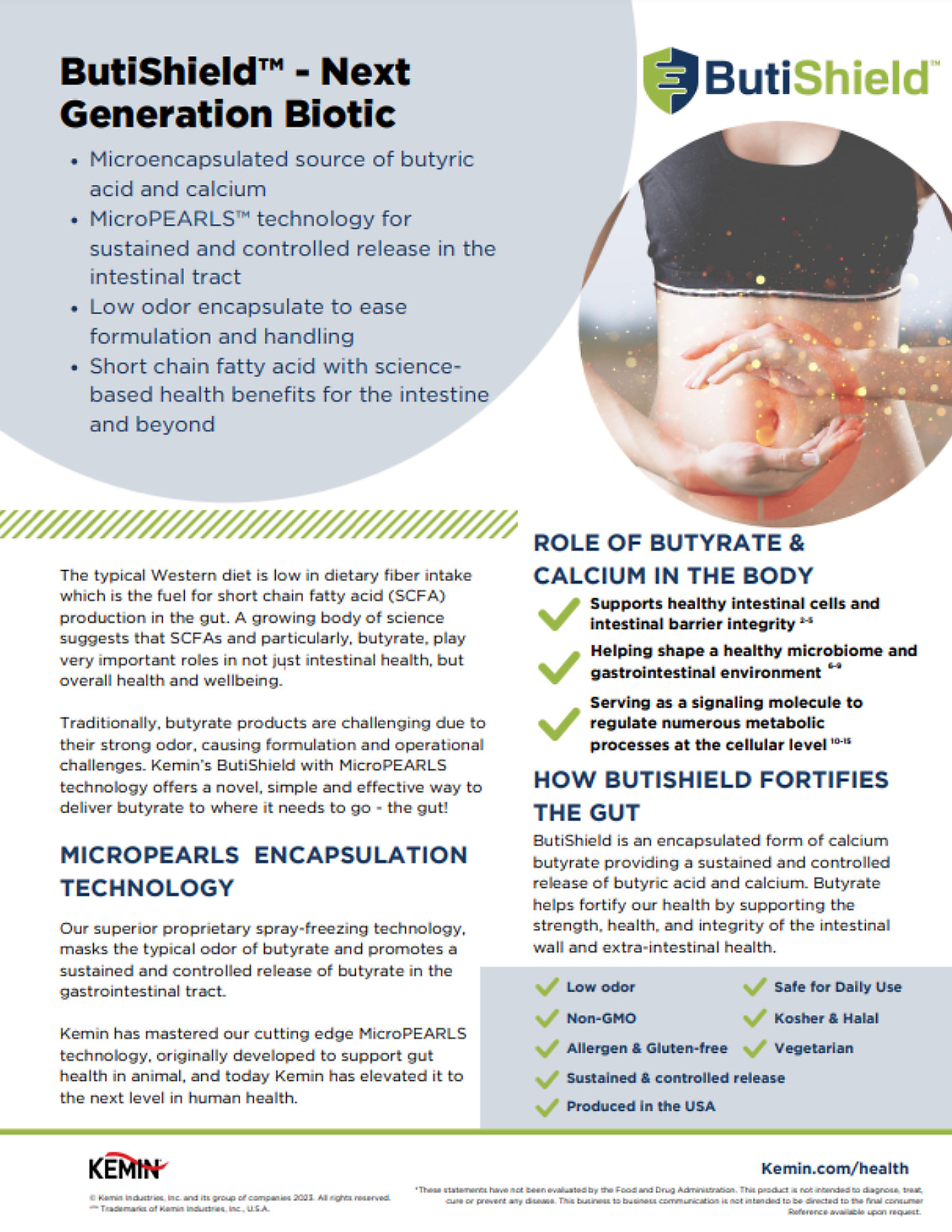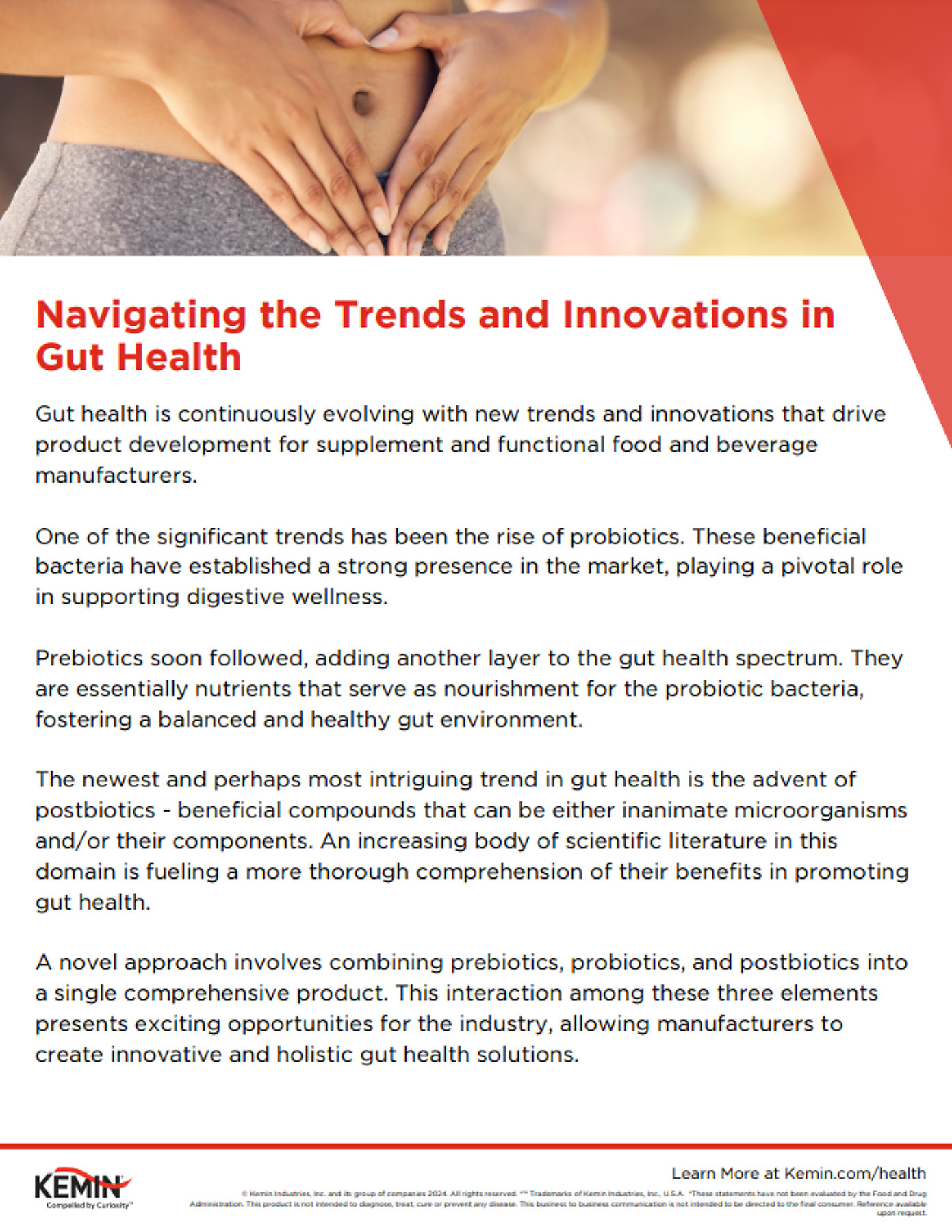In the ever-evolving landscape of health and wellness, buzzwords like "prebiotic," "probiotic," and "postbiotic" seem to dominate discussions. But what do they really mean, and how can supplement manufacturers navigate through these concepts to create products that bring clarity, transparency, and health benefits to consumers.
Let's start by deconstructing these terms and understanding their significance.
Pre, Pro, and Post: What's the Difference?
The "biotic" family of terms originates from the Greek word "bios," meaning life. It revolves around the world of microbes and their substrates.1 Back in 1921, groundbreaking research revealed that the colon, a part of the large intestine, was packed with anaerobic microorganisms.2 These mainly include bacteria, fungi and yeast, collectively forming the gut microbiome. This microbial community plays a pivotal role in influencing our health, either positively when balanced, or negatively when disrupted by pathogens, lifestyle, diet, antibiotics, stress, aging, etc., resulting in dysbiosis.3
Numbers Speak Louder Than Words
Consider this: there are approximately 100 trillion bacteria residing in your digestive tract.3 If lined up end to end, these bacteria would encompass the Earth 2.5 times over.4 That’s how vast and intricate our gut microbiome is, with a weight reaching up to 1-2 kilograms.4
Prebiotics: The Fuel for Good Gut Health5
Prebiotics serve as the fuel for beneficial microorganisms dwelling in our gut. These substances, as defined by the International Scientific Association for Probiotics and Prebiotics (ISAPP), are “selectively utilized by host microorganisms to confer health benefits”. In simpler terms, prebiotics promote a metabolism that favors the growth of beneficial microbes, ultimately contributing to improved health. Their applications extend beyond food to various industries, including animal health.
Probiotics: Beyond the Buzzword6
Probiotics, on the other hand, involve the use of live microorganisms that, when administered in adequate amounts, confer health benefits to the host. However, the term has often been misused. Although live microorganisms may be present in many foods and supplements, only characterized strains with a scientifically demonstrated effect on health should be called probiotics. Probiotics can support the bacteria that live with us, especially when challenged by, for example, poor diet, travelling or antibiotics.7
Postbiotics: The Benefits1
Postbiotics, derived from "post" (meaning after) and "bios" (meaning life), refer to preparations of inanimate microorganisms or their components that still confer health benefits to the host. Unlike probiotics, postbiotics do not involve live microbes but instead utilize components or metabolites derived from inactive microbes. This concept challenges the notion that cell viability and/or colonization are essential for conferring health benefits, opening doors to new possibilities in supplement formulations.
The Bottom Line: Health Through Microbial Balance
Much like the unique composition of our gut microbiota, a balanced approach between the “biotics” is essential for health form the gut. As supplement manufacturers, understanding and harnessing the power of prebiotics, probiotics, and postbiotics can pave the way for innovative products that truly make a difference in consumers' lives.



